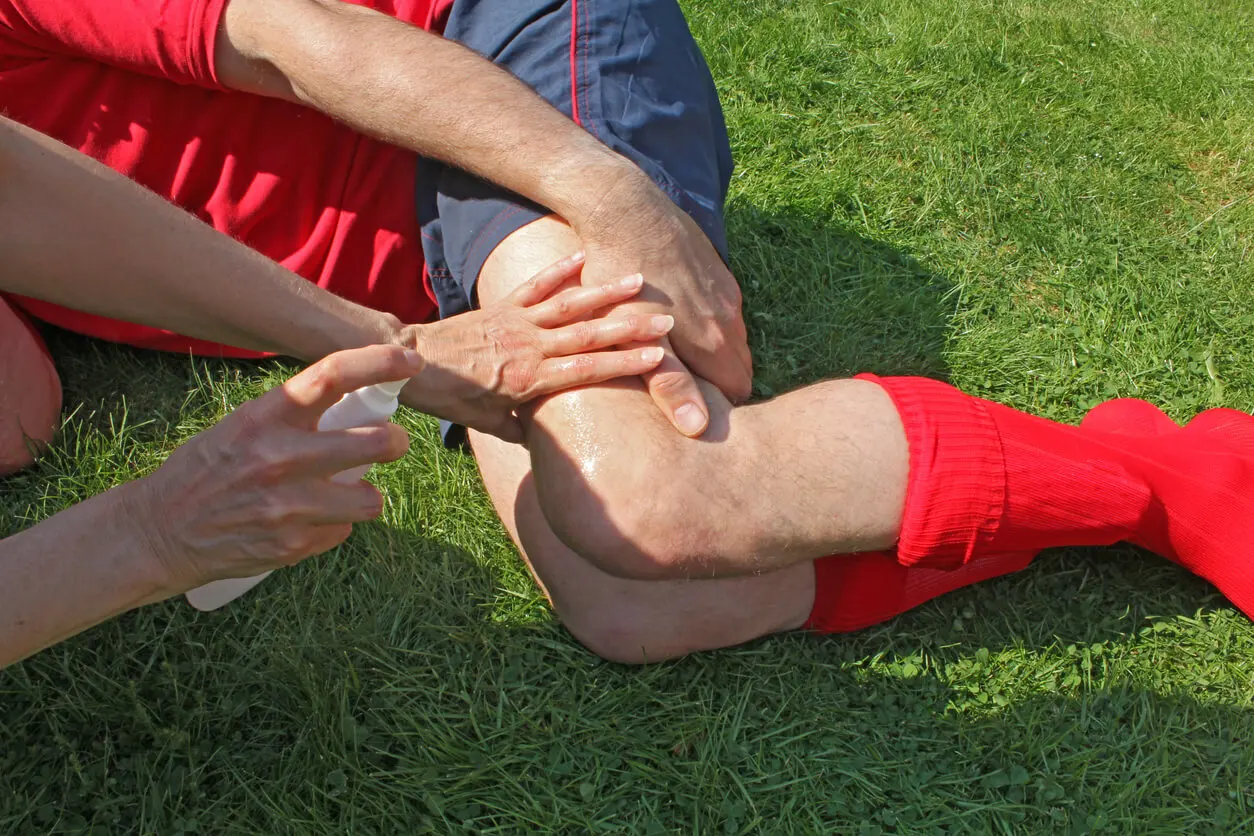Hamstring Injuries: Causes and Treatment


Reviewed and approved by the nurse Leidy Mora Molina
Hamstring injuries are a very common occurrence. Although they’re rarely serious, they do cause uncomfortable symptoms and limit movement for some time. However, only in rare cases do they require surgery.
The injury is usually caused by over-stretching or over-tightening. The hamstrings are a group of 3 muscles that run along the back of the thigh. They run from the hip to just below the knee.
People who play sports such as soccer, basketball, tennis, and any others that require high-speed running and sudden stopping are more prone to hamstring injuries, as are dancers.
What are hamstring injuries?
Hamstring injuries come in varying degrees of severity, and they cause severe pain in the back of the thigh. They can affect anyone, but they’re more common in those who practice sports that involve speed or fast movements.
As we mentioned, there are three hamstring muscles: the biceps femoris, the semitendinosus, and the semimembranosus. They’re located in the posterior thigh area and help to extend the hip and flex the knee.
These muscles aren’t used much when standing or walking. Instead, they become very active when someone is doing an exercise that requires flexing the knee, such as climbing, jumping, or running.
This injury is classified into different grades:
- Grade 1: This is a pulled or strained muscle.
- Grade 2: There is a partial tear of the muscle.
- Grade 3: There is a complete tear of the muscle.

Causes
Injuries to the hamstring muscles almost always occur when a sudden intense movement is made, which requires significant stretching. However, it can also occur gradually with slower movements. Risk factors include the following:
- Activities that require significant stretching. These include dancing and sports involving running or jumping.
- Low flexibility. A person with poor flexibility has more difficulty performing sudden, intense movements.
- Muscle imbalance. Although this is open to debate, the general opinion is that people with more developed front thigh muscles are at greater risk of injury.
- Weak glutes. The buttocks work in conjunction with the hamstrings. If the former are very weak, they create an overload and cause stress to the latter.
- Poor warm-up. If there’s no warm-up or a very poor warm-up, the risk of injury increases.
Read more: Rafael Nadal’s Recurring Injuries
Symptoms and diagnosis
The main symptom of hamstring injury is pain in the back of the leg. This is usually sudden and often accompanied by a snapping or popping sensation.
It’s also common to experience pain in the lower buttocks when walking, bending over or straightening the leg. There’s usually tenderness in the area and bruising.
However, symptoms vary depending on the severity:
- Grade 1: Sudden pain is felt, which usually reappears when moving the leg. However, muscle strength isn’t affected.
- Grade 2: The pain is more intense and is almost always accompanied by swelling in the area and bruising. Some strength is lost.
- Grade 3: There’s quite severe pain, with tenderness in the area, swelling, and bruising. There’s a distinct popping sensation at the time of injury. There’s also difficulty standing and walking.
The diagnosis of a hamstring injury is made by talking with the specialist and a physical examination. Sometimes, imaging tests, such as X-rays, ultrasound or MRI, are ordered to determine the extent of the damage.
You might also be interested in: What Are Calf Muscle Injuries and How Are They Treated?
Hamstring injury treatment
If the hamstring injury is mild to moderate, it will usually remit on its own. However, to speed healing and avoid complications, your doctor will most likely recommend some measures:
- Avoid strenuous activities
- Use a stick or crutches
- Apply ice packs to the area
- Use a compression bandage
- Elevate the leg
- Take over-the-counter pain relievers and anti-inflammatory medications
Once the initial pain and swelling subside, scheduling an appointment with a physical therapist for specific exercises may be recommended. These will help increase flexibility and strength.
If the hamstring injury is severe, surgery will be required to correct the problem. In general, this procedure is performed when the muscle is released from the area that attaches it to the pelvis or tibia.

Can it be prevented?
To prevent a hamstring injury, regular strengthening and stretching exercises are best. Physical conditioning programs, especially when playing sports, are recommended.
It’s also very important to warm up before doing physical activity and stretch afterwards. Exercise intensity should be increased gradually. If pain is felt in the back of the thigh, you should stop the activity.
All cited sources were thoroughly reviewed by our team to ensure their quality, reliability, currency, and validity. The bibliography of this article was considered reliable and of academic or scientific accuracy.
- Espinoza-Navarro, O., & Valle, S. (2014). Composición corporal y el efecto de un programa de fuerza auxiliar para prevenir lesiones en músculos cuádriceps femoral, isquiotibiales y bíceps femoral en jóvenes universitarios futbolistas. International Journal of morphology, 32(3), 1095-1100.
- Cardona Botero, A. M. (2018). La efectividad del método pilates en la distensión muscular crónica.
- De Hoyo, M., Naranjo-Orellana, J., Carrasco, L., Sañudo, B., Jiménez-Barroca, J. J., & Domínguez-Cobo, S. (2013). Revisión sobre la lesión de la musculatura isquiotibial en el deporte: factores de riesgo y estrategias para su prevención. Revista Andaluza de Medicina del Deporte, 6(1), 30-37.
- Gutiérrez Villar, R. (2013). Prevención de lesiones de isquiotibiales en futbolistas.
- Hilario, A. P., Muñoz, J. J. G. R., & Calderón, A. G. (2015). Plan preventivo de isquiotibiales en futbolistas de categoría infantil. riccafd: Revista Iberoamericana de Ciencias de la Actividad Física y el Deporte, 4(2), 26-44.
This text is provided for informational purposes only and does not replace consultation with a professional. If in doubt, consult your specialist.








